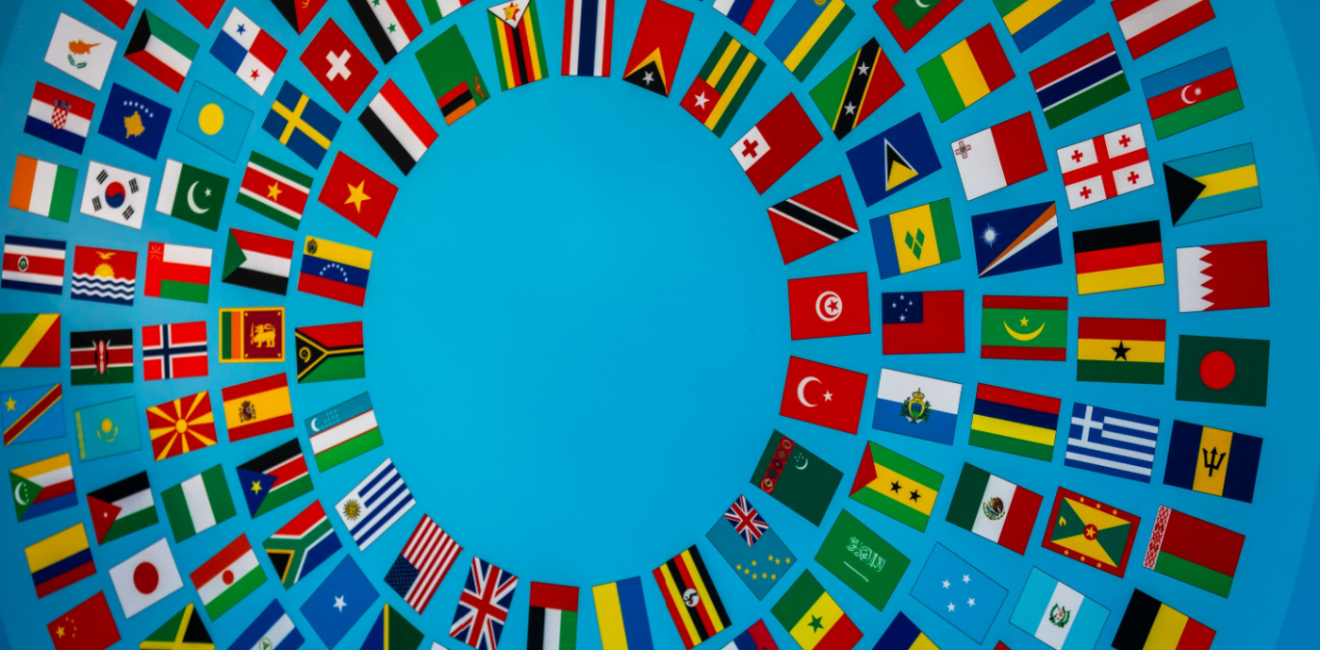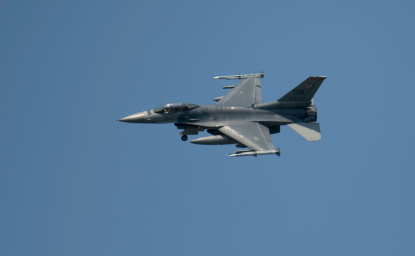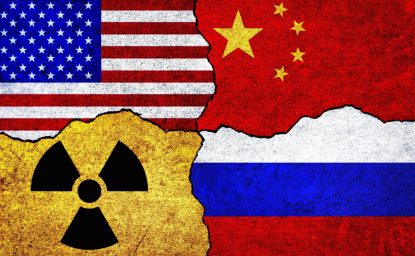The Answer Must be Yes When Developing Countries Facing Desperate Times Ask if the US Cares
Mark Kennedy
Wahba Institute for Strategic Competition Director
The economic fallout of Russia’s invasion of Ukraine, the pandemic, climate change, tightening monetary policy, a slowdown in world trade, rising protectionism, and an unresolved global debt crisis are felt around the world, but most acutely in emerging and developing economies. The World Bank’s recent Global Economic Prospects report forecasts that by the end of 2024, economic activity in these economies is expected to be about 5 per cent less than before the pandemic. The poorest countries going backward economically is a recipe for instability, with the most recent example being the coup in Niger, an “important US partner amid growing insurgencies, political instability, and Russian engagement in the Sahel region."
The world will be keenly watching how the US responds to the desperation facing emerging and developing economies. As always, there is an altruistic as well as a strategic aspect to such responses. With the Chinese Communist Party increasingly wooing the allegiance of the Global South as it vies for global leadership and seeks to shape the world order to reflect its own design, the alignment of the countries in the Global South on matters of strategic importance to the US – the degree to which they embrace the rule of law, whether they embrace trusted communications vendors, and more – may be influenced by the US’s answer.
Even though US voting power is below 18% in the units of the World Bank, with its unique veto power over amendments to the International Bank for Reconstruction and Development (IBRD), Articles of Agreement and tradition of nominating the president of the World Bank, how the World Bank acts is often viewed as a barometer of America’s attention, concern and compassion. With the World Bank having just elected former Mastercard CEO Ajay Banga as president amid great pressure to step up its game, the world will be watching to see if the US will support its new nominee. The World Bank-related components of the Biden administration’s Ukraine Supplemental Request offer an opportunity to put the US on the record as caring and leading.
While the details for the portfolio guarantee and Global Public Goods Trust Fund of the IBRD, and the Enhanced Crisis Response Window of the International Development Association can be debated, there is no doubt that the need is urgent and that addressing shared global challenges through the World Bank results in other nations stepping forward to multiply US support. Even though China and Russia are among the top eight shareholders of the IBRD, all projects it supports must meet its environmental and social standards.
Addressing shared global goals through the World Bank and leveraging the contributions of other nations is an efficient way for the US to show its heart and its leadership.
Helping Close the Infrastructure Gap
Rory Linehan
Wahba Institute for Strategic Competition Global Fellow and Global Infrastructure Hub Director of Engagement
The Global Infrastructure Hub estimates that there is a $3 trillion gap between global infrastructure investment and needs. Roughly the size of the entire UK economy, the gap is most acute in emerging markets and developing economies (EMDEs), where limited domestic capacity to fund infrastructure and inadequate private sector participation in infrastructure hamper progress. In a global polycrisis of constrained government balance sheets, heightened geopolitical tensions, and economic uncertainty, the infrastructure investment gap can only be closed when the public and private sectors work together. Limited public funds must be used to help incentivize and de-risk the private capital necessary to achieve climate and sustainable development goals.
Infrastructure is responsible for more than 79% of global greenhouse gases, while 92% of UN Sustainable Development Goal (SDG) targets could be achieved by investment in infrastructure. The Biden Administration’s $40 billion Supplemental Budget Request could therefore be an important contributor to closing the infrastructure investment gap, particularly by supporting additional development and infrastructure investment by the World Bank and IMF.
The Biden Administration estimates that these provisions would mobilize more than $200 billion in funding and financing by US partners and allies. A good example within the provisions is a $1.25 billion contribution to the International Bank for Reconstruction and Development (IBRD). Housed within the World Bank, the IBRD is the world’s largest development bank. Owned by its 189 member countries, the IBRD plays an important role in providing financing and related advice to EMDEs to reduce poverty and build prosperity. The requested provision gives financial backing to US-led efforts for the World Bank Evolution Roadmap and will help the IBRD expand its scope to address cross-border challenges such as climate change.
This will send a clear signal to other World Bank donors about the ability of the US to finance its commitments, which in turn should see increased contributions to the IBRD and elsewhere within the multilateral system. With the IBRD aiming to increase investment in EMDEs, private companies may also be incentivized to re-examine their commitment to investing in infrastructure in those markets. However, for this to succeed over the long term, the World Bank must continue to be encouraged to increase its private capital mobilization efforts.
The IBRD has set an ambitious private capital mobilization ratio target of 25% by 2030, which it is not currently on track to meet. However, it could amplify and accelerate its efforts toward this goal by engaging with country platforms like Just Energy Transition Partnerships (JETPs), co-creating funding and financing mechanisms with the private sector, and pursuing innovations like the World Bank Private Sector Investment Lab.
There are several other infrastructure initiatives housed within the Supplemental Budget Request, such as the Infrastructure Investment Fund. All these can be taken as signals of US leadership that could create partnerships and solutions to will help close the infrastructure investment gap.
Lending to the IMF
Meg Lundsager
Public Policy Fellow
The Biden administration’s supplemental request for Ukraine seeks approval for US lending to the International Monetary Fund (IMF). The request requires no new appropriation. Earlier appropriations included funding for the IMF, which has been used in part to provide a donation to the IMF’s Poverty Reduction and Growth Trust (PRGT) subsidy account to maintain below-market interest rates on IMF loans to the world’s poorest countries.
The current request seeks Congressional authorization to allocate the remainder of the earlier appropriation to cover the US budgetary cost of lending up to $15 billion to the IMF’s PRGT or its Resilience and Sustainability Trust (RST). The new RST focuses on lending to low-income and other vulnerable countries that require longer-term help restructuring their economies to address changing global, regional or national conditions. Countries are facing mounting difficulties due to fluctuating world food and energy prices, wider variations in local agricultural conditions, higher risk of disease transmission, and continuing needs to create jobs, raise incomes, and reduce poverty in their economies.
Countries seeking to access IMF funding from these facilities must demonstrate commitment to sound macroeconomic policies, including responsible monetary and fiscal policies, effective financial sector regulation, and importantly, manageable domestic and external debt profiles. Countries implementing these policies provide assurances to their domestic savers and investors, as well as foreign investors, that funding will help generate expanded production and broader employment, resulting in higher incomes and greater economic resiliency.
The World Bank and regional development banks are also expanding lending tools to help countries build more nimble economies while continuing to support broader development and poverty reduction goals. The IMF’s PRGT and RST facilities provide needed macroeconomic underpinnings, which enhance the effectiveness of the development institutions’ facilities. This synergy helps attract participation needed from the private sector.
The US is the largest IMF member and has a long history of proposing and funding IMF initiatives to increase incentives for economic reform in member countries. This leadership role has helped the IMF restore economic and financial stability in member countries, improving the lives of many around the world. But recent global developments, including the pandemic, Russia’s invasion of Ukraine, and more severe climate-related disasters have significantly increased vulnerabilities.
Other countries have already stepped forward to increase the lending power of the PRGT and RST, with the US notably absent. It should join these countries in lending to the IMF’s PRGT and RST, thereby restoring US leadership and influence in shaping economic and institutional reforms globally.
Consolidating Strategic Gains in Ukraine
The Ukraine supplemental funding request will send a message – Congress should make it a message of resolve.
Richard Bennet
Wahba Institute for Strategic Competition Global Fellow
The Biden administration’s latest Ukraine supplemental funding request comes at a critical time for the war and for US national security interests.
In the lead up to Russia’s invasion, the US intelligence community declassified an unprecedented amount of intelligence in order to convince NATO allies that Russia, acting as the aggressor, sought to invade Ukraine and topple the government in Kyiv. Though the diplomatic full-court press in late 2021 and early 2022 did not prevent the invasion, it successfully revealed the nature of Moscow's intent, leading to international condemnation of Russia and broad European support for Ukraine.
A year and a half into the war, that support has inevitably begun to fray. Upcoming elections in European capitals, as well as in the United States, stand to make large outlays of financial and military support to foreign countries unpalatable to certain segments of domestic electorates. As Ukraine’s summer counteroffensive stretches to autumn, critics on the left and right will only increase their calls to limit funding. Last month, 70 House Republicans voted to cut off all military aid to Ukraine, an amendment that ultimately failed.
The current funding request provides the Department of Defense with the tools it needs to consolidate support among allies and partners, showing American commitment. And as the language of the request makes clear, the funding also sends a message of resolve to Russia and China, establishing US investment as a counterbalance to malign activities. The focus on replenishing American defense stockpiles communicates that the United States can support its partners while also maintaining readiness for future contingencies.
The Ukrainians’ impressive battlefield success in the opening months of the war is largely due to their bravery, resourcefulness, and skill. But US military advisory programs — aimed at building institutional capacity and integrity in Ukraine from 2014-21 — have played an outsized role in helping to boost Ukraine’s military effectiveness, giving it the ability to absorb the advanced weapons systems that Washington is now providing.
The supplemental funding would consolidate support among NATO allies and buy space and time for battlefield successes. Because of institutional reforms initiated before the war, Ukraine has the capacity to receive and employ military aid effectively, making additional US support an investment in Europe’s future security. Perhaps most importantly, continued funding sends a message of resolve to strategic competitors.
With great power comes great responsibility: The US Must Support Besieged Countries That Share Our Values
Jerry Haar
Latin America Program and Wahba Institute for Strategic Competition Global Fellow
In an August 10 letter from White House Office of Management and Budget Director Shalanda Young to House Speaker Kevin McCarthy requesting supplemental funding for Ukraine, the budget director (on behalf of the president) reaffirmed the administration’s commitment to helping Ukraine defend its sovereignty. While funding for this round is likely, future budget allocations are by no means assured. The reasons include 18 months of protracted war, a combination of bipartisan “conflict fatigue,” and waning public support for Ukraine. A recent CNN poll showed 55% of Americans are opposed to Congress authorizing additional funding for Ukraine, with half asserting that the US has already done enough. While twice as many Democrats as Republicans support military aid to Ukraine, overall support continues to decline. Having allocated nearly $77 billion in humanitarian aid and financial and security assistance, 19 other countries and EU institutions have made significant contributions, as well.
Despite such multilateral support, two things are now clear. Although Ukraine is not losing, it is not winning either. Additionally, allied nations have failed to provide Ukraine with the quantity and scope of weapons and materials it needs to halt Russian aggression. To its credit, the US has provided hundreds of armored vehicles, howitzers, Stinger anti-aircraft missile systems, and Javelin-anti-tank weapons. The recent commitments by the Netherlands and Denmark to donate up to 61 F-16 fighter jets, along with Germanys’ commitment of 18 Leopard 2 tanks, are welcome contributions. However, the jets will not be ready to fly combat missions before 2024. And to combat Russia’s barbaric bombings of schools, churches, hospitals, power stations, and residential buildings, Ukraine needs more long-range fire power and air defense and artillery systems. President Zelensky’s request for ATACMS and surface-to-air Patriot missile systems would greatly strengthen Ukraine’s defensive capabilities. However, the Biden administration is reluctant to furnish these weapon systems (just as it has been in procrastinating approval of F-16s) for fear of Russian nuclear retaliation should Ukraine strike deep inside Russia.
Neither pandering to Mr. Putin nor a reluctance to confront him will yield favorable results. Had the US flexed its muscles and stepped up to the plate immediately following the February 22, 2022 invasion, providing Ukraine with everything it had requested to repel Russia, driving them out of occupied territories, public support for Ukraine would be enhanced, the image and stature of the US greater, and the world would be a safer place. With great power status comes great power responsibility. Supporting countries under siege that share the universal values of freedom, human rights, and respect for one’s neighbors is part and parcel of that responsibility.










